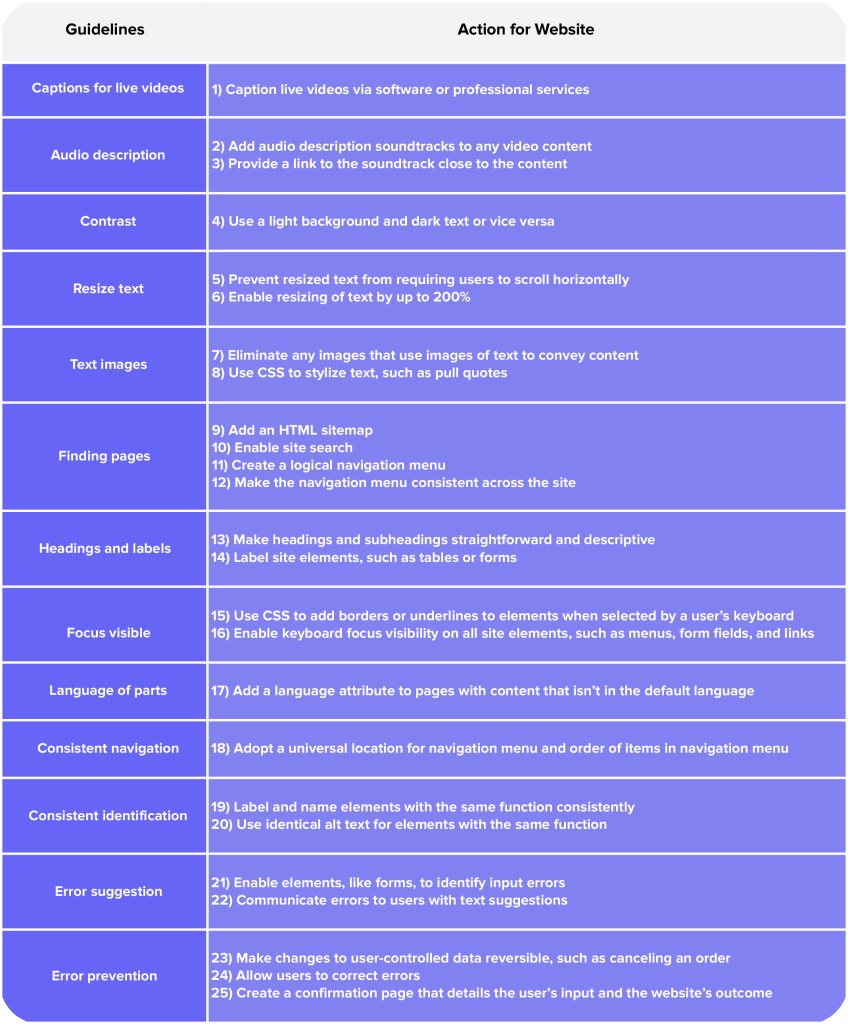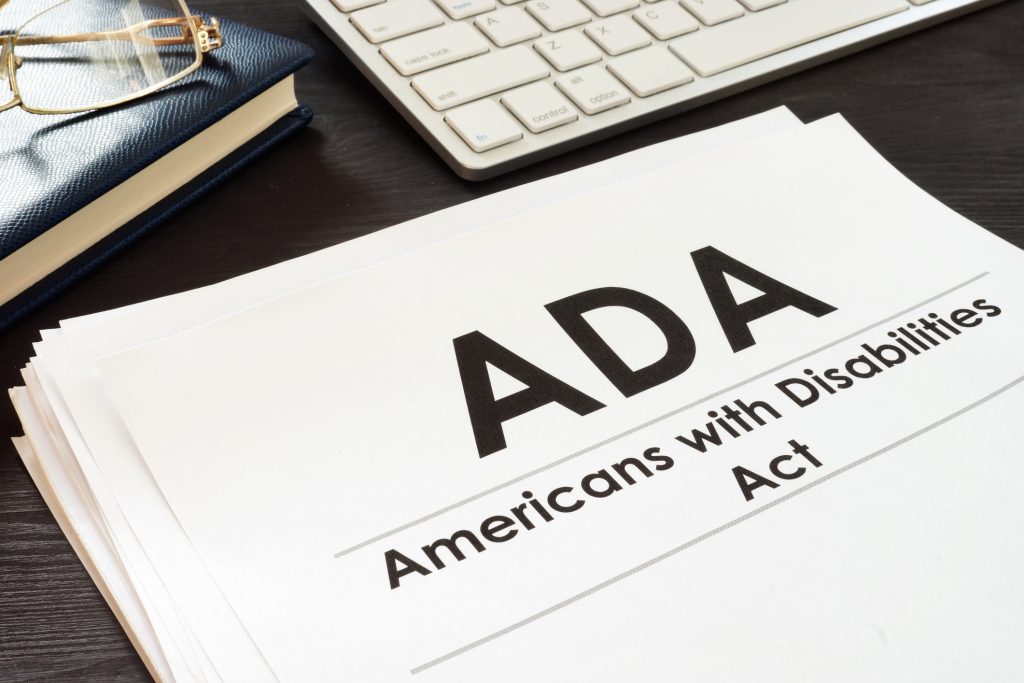The Americans with Disabilities Act (ADA), which became law in 1990, prohibits discrimination by ensuring that people with disabilities have the same rights and opportunities as everyone else. It provides comprehensive civil rights protections in employment, government services, transportation, telecommunications, and public accommodations.
The ADA guarantees that people with disabilities have the right to receive “full and equal enjoyment of the goods and services…of any place of public accommodation.” In the digital age, it’s important to understand that “public accommodations” have evolved to include a business’ website and apps in addition to any brick-and-mortar store.
How does the ADA impact my small business?
If you’re a small business with more than 15 full-time employees, the ADA extends to your customers whether they’re visiting your business in person or online. Though the law did not originally outline specific rules for websites or apps, recommendations soon emerged and have continued to be updated over the last three decades.
The Web Content Accessibility Guidelines (WCAG) – originally created in 1995 and most recently updated in 2018 – are an invaluable resource. Adhering to them is the best way to achieve compliance. As the official ADA site states, “An accessible information technology system is one that can be operated in a variety of ways and does not rely on a single sense or ability of the user.” Thus, the core principles of the WCAG ensure your site is:
- Perceivable
Visitors should be able to perceive all the information that appears on your website. Alternatives should be offered to create accessibility for all of your visitors.
For example, if your visitors are visually impaired, there should be an option to listen to the text. If they are hearing impaired, there should be an option for closed captioning. - Operable
Visitors should be able to easily navigate your website and be able to utilize every feature the site offers. - Understandable
In addition to being able to perceive your website and navigate through it, visitors also need to be able to clearly understand what they’re seeing or hearing. - Robust
Website content should be able to be interpreted by various devices and platforms, and all visitors should have the same overall experience no matter how the content is delivered.

How can I make sure my website and apps are ADA compliant?
There is a three-tiered grading system in the Web Content Accessibility Guidelines:
- Level I: Your website is only accessible by some users
- Level II: Your website is only accessible by almost all users
- Level III: Your website is accessible by all users
Level A may get you started, but it’s far from enough. Most businesses strive to reach Level AA. The checklist below outlines 25 upgrades that are needed for a website to achieve that level of accessibility:

Are there consequences for not being ADA compliant?
Yes. Even if you unintentionally overlook ADA compliance, you could still face some serious consequences. Your business may be subject to lawsuits and financial liabilities as well as experiencing damage to your brand reputation. It’s no longer possible to plead ignorance. It’s the responsibility of every owner to know what is expected of their business’ website.
Consider the experience of Domino’s. In 2016, Guillermo Robles sued the pizza chain when he couldn’t order food through their website or app with the assistance of his screen-reading software. The 9th U.S. Circuit Court of Appeals sided with the visually impaired Robles, agreeing that the “alleged inaccessibility of Domino’s website and app impedes access to the goods and services of its physical pizza franchises—which are places of public accommodation.” The case went all the way up to the Supreme Court, which refused to review the decision and let the ruling stand.
Americans with Disabilities Act doesn’t just protect access to brick-and-mortar stores.
It protects access to the websites and apps of those businesses as well.
Domino’s is far from alone. UseableNet releases reports every year that track the lawsuits related to web accessibility. Not surprisingly, the number of complaints accelerated through the pandemic when even more of our world shifted online. There was a staggering 75% increase in lawsuits between 2018 and 2021, resulting in more than 4,000 cases each year due to websites or apps not being ADA compliant.
It’s all a strong reminder that the Americans with Disabilities Act doesn’t just protect access to brick-and-mortar stores. It protects access to the websites and apps of those businesses as well.
Final thoughts
ADA compliance is only going to grow in importance because so much of our lives takes place online.
Of course it’s always important to be responsive to your customers, to listen when they bring up any issues and address them immediately. But it’s even more important to be proactive. The National Federation of the Blind reported that over 7 million people (ages 16-75) are visually impaired. In addition, the NIH reported that nearly 1 million people are functionally deaf. These are just a fraction of the people protected by the Americans with Disabilities Act. Many could be your customers, or future customers, so do the work now to make your website and apps ADA compliant.
By being accessible to everyone, you protect your business and can even help your business grow.

SOURCES:
ADA.gov
ADA National Network
Business News Daily
CNBC
Department of Justice (Justice.gov)
Los Angeles Times
National Federation of the Blind
NIH
Office of Disability Rights
TestPros.com
UseableNet
U. S. Department of Health and Human Services
WebFX.com
World Wide Web Consortium (W3.org)





